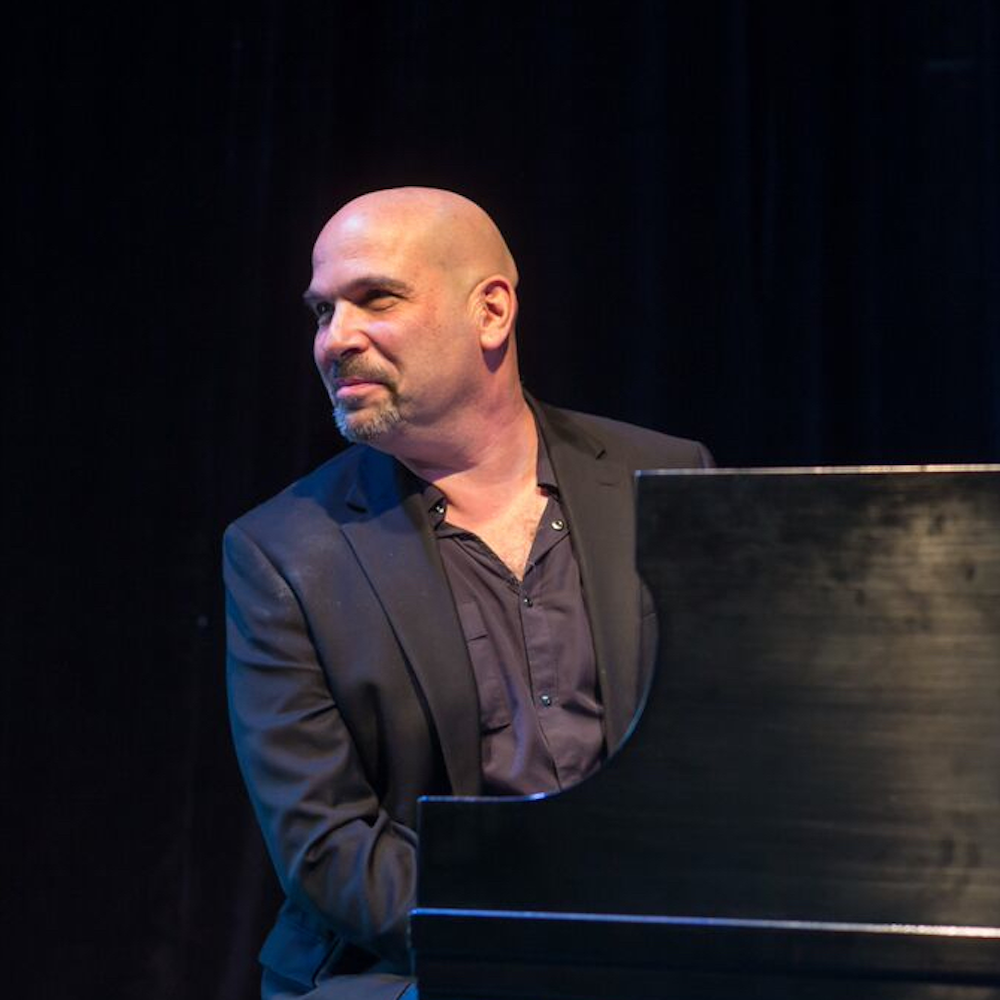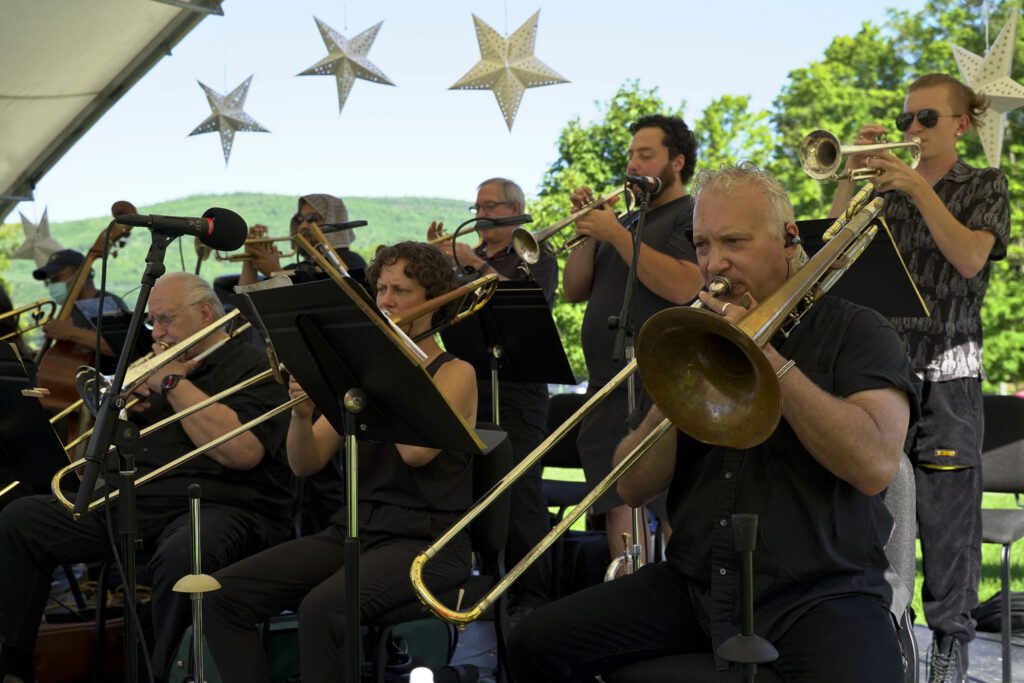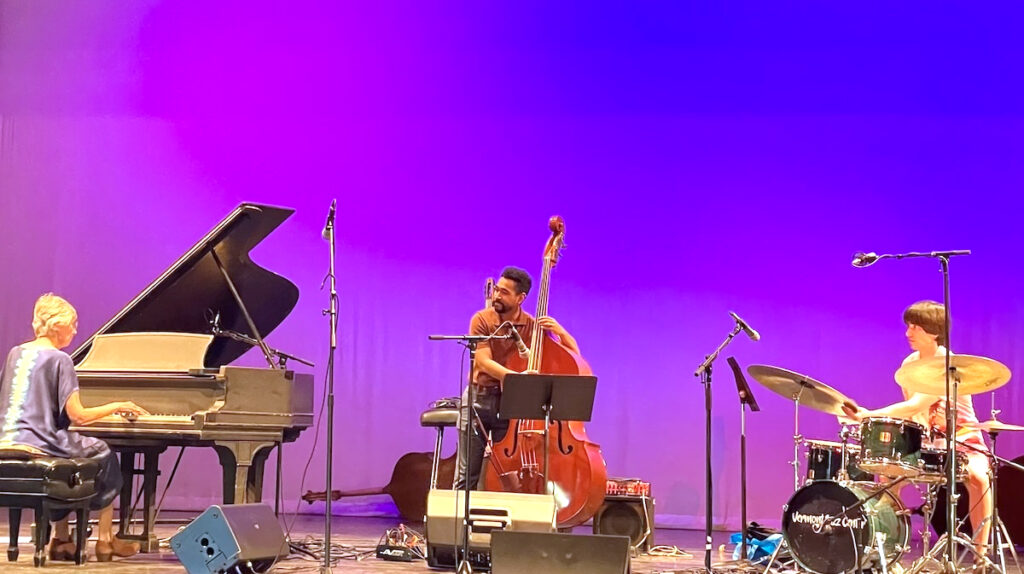
- This event has passed.
Convergence Project
June 14 @ 7:30 pm
Eugene Uman is the director of the Vermont Jazz Center and performs as a pianist in numerous projects. His annual June concert is a representation of a year’s worth of composing and collaborating with various musicians and an opportunity for him to assemble a dream band that manifests his vision and unites his musical influences. Uman’s energetic playing and writing style is flavored with the Latin rhythms that he has absorbed during his tenure living in Colombia where he initiated the jazz studies programs at la Universidad de EAFIT and el Colegio de Música de Medellín. Several of his compositions employ forms and grooves adapted from Colombian music such as cumbia, pasillo, puya, bambuco, and currulao. They are also strongly influenced by his bebop mentors: Sheila Jordan, Howard Brofsky, Mike Longo and Jimmy Heath as well as by the sounds of his youth when he played in rock and blues bands. Uman’s compositions draw from a vocabulary of modern jazz, hard bop, rock, soul, Latin American rhythms and gospel; listeners can expect a “convergence” of the music he loves in a mash-up of styles where groove is king.
This presentation of the Convergence Project is the last show of the Vermont Jazz Center’s 2024-25 season.
Read the program below…
 Welcome to the Vermont Jazz Center’s final concert of the season. I’m really excited for the opportunity to present my original material to you; it is an honor to be joined by these artists who I deeply respect and whose music I enjoy. I am also grateful to you for being here.
Welcome to the Vermont Jazz Center’s final concert of the season. I’m really excited for the opportunity to present my original material to you; it is an honor to be joined by these artists who I deeply respect and whose music I enjoy. I am also grateful to you for being here.
The Convergence Project is a rotating band that includes musicians whose creative contributions enhance my own hand. I find great joy in putting together a musical program. Each detail – from the setlist to the order of solos, to the choice of musicians, is part of an organic whole. Each selection (tune) is guided by a chart, or map, that generally defines that composition’s journey: an introduction, a clear melody and a form that listeners and players can follow. This form includes improvisational sections, a recap of the melody and a coda (ending). Although this form is consistent for each tune, the personalities of the musicians and the way that they relate with each other and the road map is what changes the journey’s color and scenery. The improvising soloists guide the group’s energy, and their creativity welcomes unpredictable responses and interactions.
Over the years I have enjoyed matching up different combinations of bassists and drummers to impart a totally different flavor, even over the same tunes. In this music, rhythm is king – the rhythm section players are the engine and their attitude is what gives the music life. When listening tonight, try to single out the bass, drums and percussion. Check out how the musicians focus on locking into specific, repetitive patterns. These rhythms are the thumbprint of each tune and they impart an identifiable flavor. Many of the tunes you will hear tonight were inspired by the rich variety of rhythms of Colombia. Ethnomusicologist Guillermo Abadía Morales cataloged over 1025 distinct rhythms in Colombian folk and traditional music. Colombian music is about precision, but it’s also about feeling and communicating. I love how Colombian people incorporate rhythm into their everyday way of life – it’s embedded in everything they do – the way they talk, walk, work, dance, laugh and sing. I try to infuse my compositions with that rhythm of life while never negating my own upbringing and influences, including the huge impact of my mentor, Howard Brofsky.
For this iteration of the Convergence Project, we welcome Peru-born percussionist Jhair Sala. Jhair is known for his deep roots in Afro-Peruvian and Afro-Cuban traditions, blending them with a fresh, contemporary edge. He has performed and recorded with legends including Ruben Blades, Pedrito Martinez, Eric Clapton, and Steve Gadd, and was twice named Rising Star Percussionist of the Year by *Drum Magazine*. Jhair will primarily be playing cajon and congas tonight, but he’s equally at home on bongos, timbales, and a wide range of traditional Latin percussion instruments.
I can’t wait to hear how Samuel locks in with trap drummer Brian Shankar Adler. A world-class educator and performer, Brian has analyzed how to apply folkloric Colombian rhythms to the drum set. He is comfortable playing a wide range of styles and can swing hard on straight-ahead jazz tunes as well. His specialties include South Asian classical music, jazz, and experimental soundscapes. Brian has performed at Carnegie Hall, the Kennedy Center and Lincoln Center and appears on over 40 recordings, including several as a leader.
I first heard New York bassist Mimi Jones in 2012 when she played with Tia Fuller here at the Jazz Center and then at a clinic at Amherst College. At that clinic, Mimi demonstrated her concept of creating a sound based on a full and unhurried quarter note: her groove is huge and danceable. As a Jazz Ambassador, Mimi toured Africa, Europe, Russia, China, South and Central America, and the Caribbean for the U.S. State Department. Her work as a side woman includes gigs with Kenny Barron, Beyonce, Dianne Reeves, Ingrid Jensen, Roy Hargrove, Ravi Coltrane and Ralph Peterson. Jones has released three albums as a leader and appears on recordings with Terri Lyne Carrington’s Mosaic Project, Rudy Royston, Lizz Wright, Tia Fuller, Luís Perdomo, Camille Thurman and others.
In the frontline, saxophonist Michael Zsoldos has been a cornerstone of the Convergence Project since its first incarnation in 2009. One of the things I love about Michael’s playing is his seamless integration into any horn section – he is a leader who understands the art of blending with other musicians in order to create magic. He is also a consummate improviser. Michael has performed with Paquito D’Rivera, Shelia Jordan, Kevin Mahogany, Houston Person, Luis Perdomo, Jason Palmer, Helen Sung, George Schuller, Armen Donelian, Bernadette Peters, Carole King, the Temptations and many others.
Flutist Anabel Gil Díaz is from Havana, Cuba currently teaching at the VJC’s Summer Jazz Workshop and the John Payne Music Center in Brookline, Ma. She attended the Institute of Jazz and Gender Justice at Berklee School of Music on a full Presidential Scholarship and then received her master’s degree from Longy School of Music. Anabel combines a fearless jazz attitude with a vast knowledge of classical repertoire and the spirit of Cuba. Anabel can be heard on Terri-Lyne Carrington’s Grammy Award-winning album New Jazz Standards Vol. 1.
The list of artists with whom French hornist John Clark has recorded and/or performed includes Gil Evans, McCoy Tyner, Miles Davis, Turtle Island String Quartet, Joe Lovano, Julius Hemphill, Jaco Pastorius, George Russell, Sting, Ornette Coleman, Paquito D’Rivera, and the Mingus Orchestra, among many others. He has released 7 albums as a leader and appeared on over 20 as a side-person. John received a composition grant from the National Endowment of the Arts, and his work has been performed and/or recorded by the Gil Evans Orchestra, McCoy Tyner Big Band, Paul Winter and Imani Winds, among many others.
Thank you for being here! Music is a reciprocal experience and your trust in me is humbling. Thanks especially to Torin Koester and Mike McKenzie of the McKenzie Charitable Trust for their sponsorship and enduring support.
-Eugene Uman
—Jerry Bergonzi



